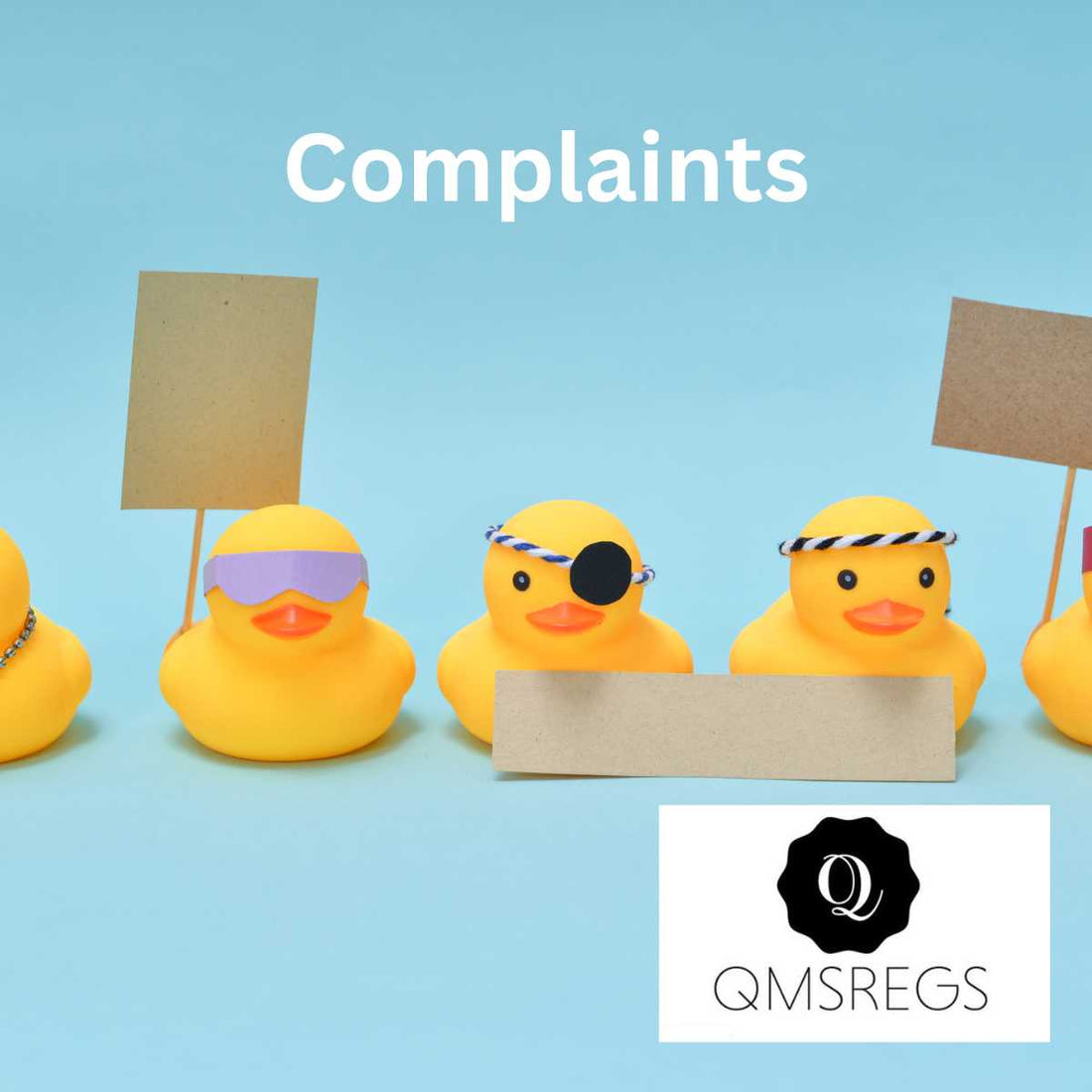Effective Complaint Handling in Quality Management Systems: A Focus on ISO 9001 and ISO 13485

Share
In today's competitive and highly regulated environment, effective complaint handling is crucial for maintaining customer satisfaction and ensuring continuous improvement. Quality Management Systems (QMS) provide structured frameworks for managing complaints, with ISO 9001 and ISO 13485 offering specific guidelines for general industries and the medical device sector, respectively. This blog explores the importance of complaint handling and the best practices for managing complaints under these ISO standards, with a focus on the reporting requirements for medical device complaints under ISO 13485.
Understanding ISO 9001 and ISO 13485
ISO 9001 is the international standard for QMS applicable to any organization, regardless of size or industry. It emphasizes a process-oriented approach, focusing on customer satisfaction, continuous improvement, and effective management of resources.
ISO 13485 is the QMS standard specifically designed for medical devices. It builds upon ISO 9001, incorporating additional requirements for the design, production, installation, and servicing of medical devices. It places a greater emphasis on risk management and regulatory compliance, critical for ensuring the safety and effectiveness of medical devices.
The Importance of Complaint Handling
Effective complaint handling is vital for several reasons:
- Customer Satisfaction: Addressing complaints promptly and effectively helps maintain customer trust and satisfaction.
- Continuous Improvement: Complaints provide valuable feedback that can drive improvements in products, services, and processes.
- Regulatory Compliance: For industries such as medical devices, regulatory bodies require stringent complaint handling procedures to ensure product safety and effectiveness.
- Risk Management: Identifying and addressing complaints helps mitigate risks and prevent recurrence of issues.
Key Components of Complaint Handling in ISO 9001 and ISO 13485
Both ISO 9001 and ISO 13485 outline essential components for effective complaint handling:
Complaint Recording and Documentation
ISO 9001: Requires a documented process for receiving, documenting, and addressing customer complaints.
ISO 13485: Mandates detailed documentation and records of complaints, including investigations and corrective actions.
Complaint Evaluation and Investigation
ISO 9001: Emphasizes analyzing complaints to determine their causes and implementing corrective actions.
ISO 13485: Requires a thorough investigation of complaints, especially those related to product safety and regulatory compliance, often involving risk assessment.
Corrective and Preventive Actions (CAPA)
ISO 9001: Focuses on identifying root causes and implementing actions to prevent recurrence of issues.
ISO 13485: Similar to ISO 9001 but with a stronger emphasis on documenting and validating the effectiveness of corrective actions in the context of medical devices.
Communication and Feedback
ISO 9001: Stresses the importance of communicating with customers regarding the status and resolution of their complaints.
ISO 13485: Requires communication not only with customers but also with regulatory authorities when necessary, ensuring transparency and compliance.
Management Review
ISO 9001: Involves regular review of complaint data by top management to identify trends and opportunities for improvement.
ISO 13485: Requires top management to review complaint data as part of their overall responsibility for the QMS, with an emphasis on product safety and regulatory compliance.
Reporting to Regulatory Authorities under ISO 13485
ISO 13485 includes specific requirements for reporting certain types of complaints to regulatory authorities, particularly those related to product safety and performance. This is a critical component of ensuring that medical devices remain safe and effective throughout their lifecycle.
Identification of Reportable Events
- Complaints that suggest a potential risk to patient safety or indicate a malfunction that could lead to a significant hazard must be identified as reportable events.
- Examples include serious injuries, deaths, or situations that could lead to adverse health outcomes if not addressed.
Regulatory Reporting Requirements
- Timeliness: Reportable events must be communicated to regulatory authorities promptly, often within a specific timeframe mandated by the relevant regulatory body.
- Content: Reports must include detailed information about the complaint, the investigation findings, and any corrective actions taken or planned.
- Follow-Up: Ongoing communication with regulatory authorities may be required to provide updates on the status of the investigation and the effectiveness of corrective actions.
Documentation and Record-Keeping
- Maintain comprehensive records of all complaints, investigations, and communications with regulatory authorities.
- Ensure that documentation is readily accessible for regulatory inspections and audits.
Communication with Stakeholders
- Notify affected stakeholders, including healthcare providers and patients, as required, to ensure they are aware of potential risks and the actions being taken to mitigate them.
Best Practices for Effective Complaint Handling
To effectively handle complaints within the frameworks of ISO 9001 and ISO 13485, organizations should consider the following best practices:
- Establish a Clear Process: Develop and document a clear, step-by-step process for handling complaints, ensuring all employees understand their roles and responsibilities.
- Train Employees: Provide regular training to employees on the importance of complaint handling and the specific procedures to follow.
- Encourage Feedback: Foster a culture that encourages customers to provide feedback and report complaints, viewing them as opportunities for improvement.
- Use Technology: Implement a robust complaint management system to track, analyze, and report on complaints efficiently.
- Monitor and Review: Regularly monitor complaint handling activities and review their effectiveness as part of the management review process.
Summary
Effective complaint handling is a cornerstone of Quality Management Systems and a critical factor in maintaining customer satisfaction, achieving regulatory compliance, and driving continuous improvement. By adhering to the guidelines set forth in ISO 9001 and ISO 13485, organizations can ensure they handle complaints efficiently and effectively, ultimately enhancing their overall quality and performance.
For more insights on Quality Management Systems and compliance with ISO standards, stay tuned to our blog, and feel free to contact us with any questions or for further information on how we can support your QMS needs.
Resources
Related Quality Management Templates
ISO 9001:
- ISO 9001Complaints Procedure
- ISO 9001 Complaint Investigation Form
- ISO 9001 Feedback Procedure
- ISO 9001 Feedback and Complaints Spreadsheet
ISO 13485:
- ISO 13485 Complaint Procedure
- ISO 13485 Complaint Investigation Form
- ISO 13485 Feedback Procedure
- ISO 13485 Feedback and Complaints Spreadsheet
- ISO 13485 Reporting to Regulatory Authorities Procedure
Quality Management Consultancy
